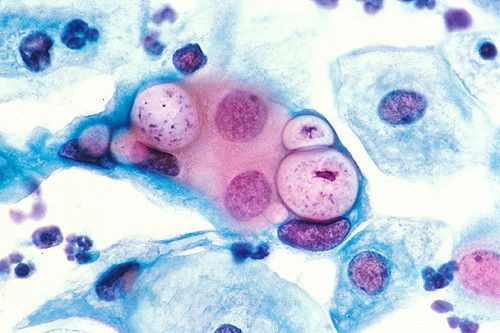Chlamydia Bacteria Also Linked To Trachoma — World’s Leading Infectious Cause Of Blindness

Scientists in their white lab coats may not look like time travelers, but often they must be exactly that. In this case, a team of Australian researchers journeyed into the past to track the genes of the bacteria Chlamydia trachomatis (C. trachomatis) and arrived at a surprising discovery. By acquiring genetic mutations, their study indicates, a lineage of C. trachomatis that causes blindness can transform into a separate bacterial strain that is responsible for a common sexually transmitted infection.
Chlamydia ranks among the most common sexually transmitted infections (STI) and can infect both men and women. Men rarely have health problems linked to an infection with C. trachomatis, but in women, the bacteria can lead to permanent damage of her reproductive system and may even lead to infertility. Because many people have no symptoms, they do not have a reason to get tested so many cases go unreported. However, the Centers for Disease Control and Prevention estimate 2.86 million infections occur annually in the United States alone.
Unusually, the same bacterium is also responsible for trachoma, a neglected tropical disease that infects the eye and may result in blindness. According to the World Health Organization, trachoma is the leading cause of preventable blindness, occurring most often where people live in overcrowded conditions, spreading easily from person to person. It affects about 2.2 million people globally and is endemic in Australia among Aboriginal people in remote locations. A quiet disease, infection in many cases first occurs in childhood but blindness does not result until adulthood after repeated re-infection causes scarring on the inside of the eyelid.
Previously scientists believed two separate lineages of the bacteria resulted in either the STI or blindness. The Wellcome Trust Sanger Institute and Menzies School of Health Research put this theory to the test by time-traveling into the past.
Evolution
The research team began with frozen isolates of the bacteria originally collected in the 1980s and 1990s. Though frozen for 30 years, the scientists performed their magic and resuscitated the chlamydia bacteria in order to study their genomes and discover how they had evolved.
Led by Professor Nick Thomson and Associate Professor Phil Giffard, they sequenced the strains in order to learn of any relationships to current strains. Following trails into the past, the scientists observed how, by acquiring just one or two genetic mutations, the trachoma associated strain could recombine into the STI causing strain. Chlamydia is a bacteria that can readily exchange DNA so this fact along with the results of their analysis suggest a continued potential for some new variant strains to emerge.
The researchers say their study has public health implications. Notably, their results suggest genetic mutations can facilitate “reemergence” of trachoma and this may be one reason why the blinding infection may be difficult to stamp out.
“The evidence that this has happened multiple times in Australia suggests that this is not a vanishingly rare event,” wrote the researchers, who remain committed to tackling this disease.
Source: Andersson P, Harris SR, Seth Smith HSR, et al. Chlamydia trachomatis from Aboriginal people with trachoma are from novel lineages. Nature Communications. 2016.



























